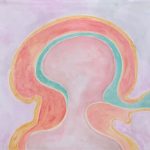Training
Courses in Biodynamic Cardiovascular Therapy
with Michael J. Shea, PhD

What is Biodynamic Cardiovascular Therapy?
The majority of people in Western countries now suffer from an epidemic of metabolic syndromes (such as heart disease, obesity and diabetes). The central locations of metabolic problems are in the intestines and the cardiovascular system throughout the body especially its endothelium. Biodynamic Cardiovascular Therapy (BCVT) is the application of biodynamic craniosacral therapy principles to the cardiovascular system. This work was begun by the founder of Osteopathy, Andrew Taylor Still in the 19th century when he said that “the rule of the artery is supreme.” That wisdom is still true today.
The following courses are designed for craniosacral therapists who have graduated from a biodynamic foundation training, studied with other teachers or have a clinical practice in craniosacral therapy. Students without prior training in craniosacral therapy but who are licensed manual therapists are welcome and need to be interviewed prior to acceptance in a course.
There are two intentions of these courses. The first is for the therapist and client to experience embodied wholeness and compassion through awareness of the heart and vascular system. The focus is on developing these qualities first in the therapist and then offering them to the client through the therapeutic presence of the therapist and how kindness is expressed through his or her hands when in contact with the client. This intention is based on the therapist’s perception of Primary Respiration (sometimes called the Long Tide in Cranial Osteopathy) and dynamic stillness (sometimes called a stillpoint) while gently contacting the arteries of the client.
The second intention is to understand and sense the cellular metabolism of the client via the cardiovascular system. This especially involves the crucial role in health of the vascular endothelium (the inner lining if the arteries and veins). In this approach, students learn how to positively influence the metabolic system of the client in the blood and its vessels. This includes the immune system in the blood and endocrine systems located in the endothelium. The heart-blood-endothelium complex is contacted with the therapeutic activity of Primary Respiration and stillness already within it. In this way, the therapist and his or her hands is simply reminding the cardiovascular system of its preexisting health.
Primary Respiration is defined as the long tide in biodynamic craniosacral therapy. It is the movement of wholeness. It is one of the three tidal movements that craniosacral therapists might work with in clinical practice. The other two are the cranial rhythmic impulse (CRI) and the mid tide both of which are faster. Primary Respiration was first discovered by William Garner Sutherland, DO, and incorporated into clinical practice because of the therapeutic benefits when both the practitioner and client access a slow rhythm in their nervous system, heart and body– such as Primary Respiration.
The purpose of the whole training is:
- To study the new science of compassion and its recovery with Biodynamic Cardiovascular Therapy. Each class contains mindfulness based guided meditations linking compassion, kindness and gentle care with the experience of Primary Respiration and stillness in and around the body. This is the essence of each course.
- To learn new palpation skills to help stabilize and improve the cellular metabolism of the contemporary client specifically in their Fluid Body (the instinct of knowing how to self-heal), intestinal, cardiovascular and nervous systems.
- To learn important new aspects of prenatal development and the cellular metabolism of the cardiovascular system. Human embryology from the point of view of morphology (holistic movement) will be taught in many classes which informs the palpation skills being taught.
- To experience embodied wholeness in one’s self first and then offer that to the client through skillful application of palpation skills based on compassionate touch. This begins in the physical body together with its Fluid Body.
- To maintain a Heart to Heart connection. The electromagnetic field of the heart extends 15 feet around the body and constantly interacts with other heart fields. Primary Respiration moves within the heart field to generate safety, healing and embodied wholeness. This sensory awareness can be applied in all life situations. Numerous skills will be taught to experience this state.
In these classes, students will learn how and when to blend current and previous learning in all forms of craniosacral therapy as well as manual therapy of all kinds for the most effective treatment for the client. Each year the curriculum of all courses is updated with new research information on the Fluid Body, cardiovascular and nervous systems and its application in clinical practice.
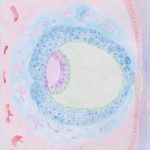
Introduction to Biodynamic Cardiovascular Therapy:
Working Heart to Heart
This is a new paradigm in craniosacral therapy called Biodynamic Cardiovascular Therapy. A cardiovascular approach is to feel the health of the heart and vascular system in one’s self and the client with Primary Respiration and stillness. Cardiovascular work is about delicate palpation skills. In this class, students will learn how and when to blend all previous learning in craniosacral therapy for the most effective treatment for the client.
This course builds the framework for the biodynamic cardiovascular approach to craniosacral therapy. We will cultivate the perceptual-touch necessary for sensing both deep metabolism of the autonomic nervous system and its relationship with cardiovascular physiology. A dynamic new palpation skill to contact the entire vascular system will be taught.
The following arteries will be studied and palpated biodynamically: The radial artery, the anterior tibial artery, the posterior tibial artery and the subclavian artery. The principle of practice with the cardiovascular system is to work with the peripheral arteries first before contact with the heart at the center. A specific protocol will be taught to integrate into the practitioner’s clinical practice.
- Learning the stages of blood-heart development
- Palpating and treating the cardiovascular system
- Sensing the relationship of structure and function in the body
- Refining orientation to biological slowness and stillness for healing
The Head-Face-Cardiac Connection (BCVT 1)
- This course is focused on new research in the embryonic development of the heart and its implications for biodynamic practice. The relationship of the developing face to the brain and the heart is a focus of this class. The heart is ignited by growth factors from the face and the movement of the Fluid Body. This links the heart, brain, face and gut together as one unit of function. The following arteries are taught and palpated biodynamically: facial, transverse facial and maxillary arteries. Heart Rate Variability is taught with a specific breathing practice called coherent breathing essential for stabilizing the heart.The four types of prenatal circulatory systems are presented. The relationship of the therapist and client is an interconnected circulatory system. Meditations and cardiovascular explorations are taught to bring conscious awareness to the movement of the heart and blood in the therapist’s body and then in the client. Research shows that this develops empathy and compassion in the therapist and the client.
- Introduction to the facial arteries
- Perform the skills of balancing the head, neck and heart with PR
- Exploration with the fluid fields of the cranium
- Deepen an understanding of biodynamic practice being a two-person biology
The Peripheral Arteries and the Fluid Body (BCVT 2)
This course builds more framework of Biodynamic Cardiovascular Therapy. A basic understanding of Metabolic syndrome is presented. Students cultivate the palpation of sensing embryonic metabolism and cardiovascular physiology. Palpation includes new research on the critical importance of the endothelium of the artery as it relates to Metabolic syndrome. We focus on exploring the arteries with PR and stillness.
The following arteries are taught and palpated biodynamically: inferior thyroid, iliac, femoral and common carotid arteries. This includes a deeper understanding of the autonomic nervous system (ANS) metabolically and physiologically. A principle of practice with BCVT is to explore the peripheral arteries first before contact with the heart at the center. Exploration of the cardiovascular system is always preceded by biodynamic exploration with the Fluid Body.
- Learning the types and stages of Metabolic syndrome
- Palpating and treating the whole cardiovascular system
- Treating the chemoreceptors and baroreceptors of the ANS
- Refining orientation to the cycle of attunement
Heart and Cerebrovascular Circulation (BCVT 3)
This course will explore the deep development of the central structures of the cardiovascular system, especially the heart-brain connection. Students will learn a new cerebrovascular circulation protocol. This protocol is based on research showing decreased blood flow to the brain following a mild traumatic brain injury. This is combined specifically with exploring the carotid sinus via Primary Respiration (PR). Palpation skills will include deeper exploration of the vertebral artery, the sagittal sinus and jugular vein. Specific hand positions for sensing PR in the myocardium of the heart will be explored. These skills are vital in the experience of embodied wholeness as it relates to the metabolism of the central, autonomic and cardiovascular systems.
The vertebral artery will be explored by sensing the developmental anatomy of the occiput and traditional approaches to the atlanto-occipital joint. The vertebral artery supplies 20% of blood to the brain and the carotid arteries supply the remaining 80% of blood to the brain. These arteries are implicated in many types of challenges from headaches to Post Traumatic Stress Disorder (PTSD). It is the intention of BCVT to support the felt sense of wholeness in and around the body. Attention on the cardiovascular system and Fluid Body changes brain function, especially the way deep emotions are processed.
- Learning to balance the heart-brain connection
- Contacting Primary Respiration in the myocardium of the heart
- Practicing a new cerebrovascular circulation protocol
- A new protocol with the A-O Joint and vertebral artery
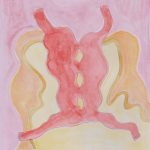
Ophthalmic and Internal Carotid Arteries (BCVT 4)
This course explores the deeper arteries of the face and cranium. A new approach to balancing the derivatives of the internal and external carotid arteries is presented. Specific explorations of the derivatives of the ophthalmic artery, the supraorbital and supratrochlear arteries are taught to influence the Circle of Willis and treat the eyes.
The embryology of facial development is taught. Skills include exploration of the deeper arterial system in the face and around the cranial base of the temporal bones in order to stabilize and transform the ANS, brain and heart connections. Biodynamic therapists deepen their knowledge of the cardiovascular system in the brain, specifically the Circle of Willis and how to influence it. A review of the Polyvagal System and the Social Nervous System is given.
- New exploration for balancing the Circle of Willis
- Learn to blend biodynamic exploration of the temporal bones and internal carotid arteries
- Differentiate the internal and external carotid arteries
- The fluid fields of the face are explored prenatally

Microbiome and Mesenteric Arteries (BCVT 5)
- This course deepens understanding of Metabolic syndrome and how it originates in the gut. New research on the microbiome is presented. Distinctions are made between the heart, brain and gut metabolic pathways especially through the portal vein system and liver. Students learn important skills to balance these connections. Included in this class is contact with the abdominal aorta, coeliac trunk, superior mesenteric artery and right colic arteries to balance the five ANS plexi in the gut.Included in this class is information on the structure and function of the epithelium of the gut. The majority of clients have “leaky gut” syndrome causing inflammation and Metabolic syndrome. Students learn how the endothelium of the vascular system becomes inflamed from “leaky gut” and is related to all other endothelium in the body, especially the liver.
- Learn the signaling system of the ANS between the heart, liver and brain
- Learn new bridging skills between the arteries, veins and ANS plexi in the vascular system
- Learn the embryological origins of the mesenteric arterial system
- Begin to heal the intestines through the superior mesenteric artery
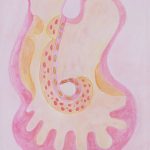
Subdiaphragmatic Vagus Nerve and Pelvic Arteries (BCVT 6)
This class is on the deep vascular structures of the abdomen and pelvis. We explore the inflammatory processes in the endothelium of the gut and liver via the dorsal vagus. Students learn specific explorations to contact the inferior mesenteric and left colic arteries, the mesentery and the abdominal aorta. Differentiating the common iliac, internal iliac and external iliac arteries is taught.
We look at the entire continuity of the subdiaphragmatic vagus between the diaphragm and sacrum. The dorsal vagus nerve is critical in fighting inflammatory conditions in the gut and cardiovascular system. New research on the superior and inferior hypogastric plexi of ANS and sacral outflow of the PNS is presented including the importance of Cannon’s Point.
- Learn about the subdiaphragmatic vagal system as a metabolic regulator
- Bridge between the abdominal viscera and pelvic viscera via cardiovascular system
- Learn to balance the vagus nerve and abdominopelvic organs
- Learn how to increase blood circulation in the pelvic viscera

Pregnancy and the Cardiovascular System (BCVT 7)
A compassion-based model of pregnancy will be presented in this course. The blood volume in a mother’s body almost doubles during pregnancy and will be a focus of palpation to enhance her wellbeing and that of her child. This compassion base includes one set of palpation skills that focus on how to support both the hearts of the mother and her baby for birth and long-term positive health outcomes. Another set of compassion-based skills will focus on balancing the prenatal health of the mother. Students will learn how the fetal heart develops and synchronizes with the mother’s heart for optimal health. Sensing PR and dynamic stillness within the blood itself during pregnancy and life will be taught as a compassion practice. In addition, new information on fetal placental development, the effects of hypoxia and fetal programming will be presented from the new field of behavioral perinatology. During the class a pregnant mother will be coming in for a demonstration of learning.
This course will offer new research regarding prenatal Heart Rate Variability (HRV) and its use as a long-term therapeutic marker during pregnancy for the mother, infant and also for the adult population. HRV is a measure of the flexibility of the autonomic nervous system of the heart. More flexibility means healthier hearts, especially during pregnancy. HRV will be taught through a skill called coherent breathing and embodied heart meditations. These explorations will be integrated with PR to balance the autonomic nervous system of heart, lungs and brain of moms and their babies during pregnancy.
- Learn to breath with the fundamental quiescent rhythm of coherent breathing
- Learn a new compassion based model of pregnancy
- Learn new approaches to palpation of vascular tree with Primary Respiration
- New cardiovascular and breathing protocols for pregnant moms

Neonatal Cardiovascular Physiology (BCVT 8)
This course will focus on physiological events taking place in the infant who is transitioning from aquatic breathing to air breathing before, during and after birth. New palpation skills will orient to stabilizing cardiopulmonary respiration and the gastrointestinal system in newborn babies. Several cardiovascular protocols will be taught and practiced. This includes a new neonatal-metabolic protocol with the brachial, renal,temporal, tibial and femoral arteries. During the class an infant with the mother will be coming in for a demonstration of learning.
Specific skills will be taught to evaluate the stress level of an infant and to help repair the infant-caregiver relationship if necessary through specific communication skills. We will learn a sequence of evaluation and palpation skills for an infant based on balancing the cardiovascular and nervous systems before considering the membrane and osseous systems of the baby. A review of traditional craniosacral therapy approaches for working with babies will be given. This includes skills for stabilizing the cranial base and suck-swallow-breath reflex in infants.
- Learn skills to support the respiratory and cardiovascular systems of infant and caregiver
- Develop specific evaluation skills for determining normal heart-brain development
- Advance your understanding of how the infant heart develops
- Apply communication skills for optimal bonding with mom and her baby
Nine Pulses and Five Subtle Winds (BCVT 9)
This course explores the human body from a Tibetan Medicine point of view. An understanding of the body as the home of the five elements will be presented especially space and wind. Skills are integrated into a clinical method for working with both arteries and veins. There is a pandemic of Metabolic syndrome globally requiring a new understanding of the human body for healing at an elemental level. Nine pulses refer to the older locations for pulse diagnosis and for balancing body chi in classical Chinese medicine. Each of these pulses is associated with an artery, an organ (meridian) system as well as the flow of PR (chi) inside and outside the body.
Five veins refer to the embryonic veins that carry the incarnating consciousness into the heart. The five veins of incarnating consciousness of Tibetan Medicine will be taught and sensed via the perception of dynamic stillness in the umbilical, two subclavian and two jugular veins. They are associated with dynamic stillness as the element of space. Together the nine primary pulses and five veins represent an advanced understanding of the Ignition process in BCVT.
- Learn to differentiate the nine pulses of classical Chinese medicine to create cosmological balance
- Refine the skill of perceiving the therapeutic direction and effects of PR as Chi
- Learn the new metabolism of the body
- Deepen skills with dynamic stillness in the veins of cardiovascular system
The Multivagal Safety System in BCVT (BCVT 10)
A new paradigm is presented on the metabolism of the Vagus nerve above and below the respiratory diaphragm called the Multivagal Safety System. Students learn important biodynamic skills to balance the vagal metabolism of the body based on Primary Respiration and stillness. Included in this class is contact with the Vagus nerve in the cranium, face and neck, heart-aorta-heart meridian, abdominopelvic viscera and ANS plexi, the large intestine-sacrum-pudendal artery. A new understanding of the vagus nerve as a system of embodied safety is integrated into student’s clinical practice.
Students deepen their understanding of how Metabolic syndrome is co-regulated by the Vagus nerve. Metabolic syndrome is a worldwide pandemic (cancer, type 2 diabetes, obesity, autoimmune disorders, cardiovascular disease, dementia). The intention of this class is to help students sense embodied safety in the body from a metabolic point of view.
- Learn the new Multivagal Safety System between the pelvis, gut, heart and brain
- Learn the four types of safety associated with the Vagus nerve
- Understand the metabolism of the Vagus nerve
- Learn to balance the ANS metabolically in biodynamic practice
Craniosacral Therapy for Concussions: Balancing the Cranial Base
The prevalence of mild traumatic brain injuries (MTBI) has increased 70% in the past decade especially in younger people not just athletes. The long term consequences of MTBI includes physical and cognitive impairment through the lifespan. This course will explore techniques for the cranium to relieve the effects of impact trauma to the upper extremities and head injuries. Rebalancing the bones and membranes of the head and neck especially through the sphenoid, vomer, ethmoid and occiput of the cranial base will be explored. Additional information will be provided on facial trauma and sutural dysfunction.
This course is open to any licensed manual therapist interested in learning about head injuries and how to gently work with them. Previous experience with craniosacral therapy is not necessary. This course is a complement to its sister course called Craniosacral Therapy for Concussions: Rebalancing the Cerebrovascular System. Either course can be taken without the other. When both courses are taken, the student will have a very effective set of tools to work with a wide variety of impact trauma from car accidents to sports injuries.
The following therapeutic skills will be taught:
- Multiple protocols for the atlanto-occipital joint space (AOJ).
- Blending traditional craniosacral therapy with the cardiovascular system.
- Identifying and relieving specific restrictions in the occipitomastoid suture.
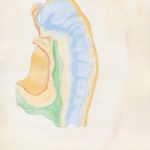
Craniosacral Therapy for Concussions:
Balancing the Cerebrovascular System
This craniosacral therapy course will explore the cerebrovascular consequences of impact trauma to the face, neck and head. New research shows that concussions decrease blood flow to the brain indicating both short and long term consequences physically and psychologically. Students will learn to work with the effects of concussions and mild traumatic brain injuries now common in everyday life and all age groups. Specific protocols will be taught to increase proper circulation in the brain and neck. Restrictions in the cardiovascular system from mild traumatic brain injuries (MTBI) will be explored with new craniosacral therapy skills for the arteries of the head and neck.
This course is open to any licensed manual therapists interested in learning about head injuries and how to gently work with them. Previous experience with craniosacral therapy is not necessary. This course is a complement to its sister course called Craniosacral Therapy for Concussions: Rebalancing the Cranial Base. Either course can be taken without the other. When both courses are taken, the student will have a very effective set of tools to work with a wide variety of impact trauma from car accidents to sports injuries. The following therapeutic skills will be taught:
- New craniosacral therapy protocols for the cerebrovascular system.
- Increasing blood flow to the brain.
- Identifying and relieving specific vascular restrictions in the cranium.
Please note: Michael Shea reserves the right to make minor changes of the curriculum based on new research.



